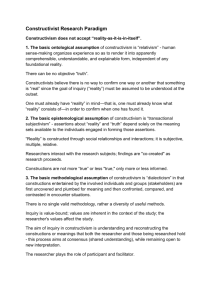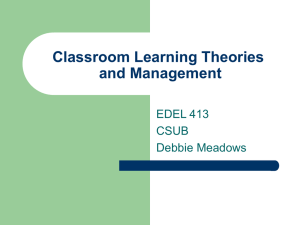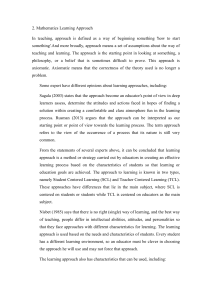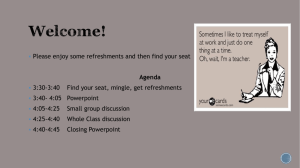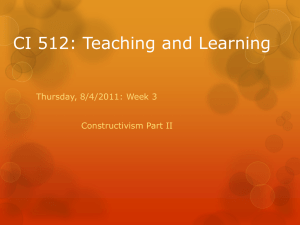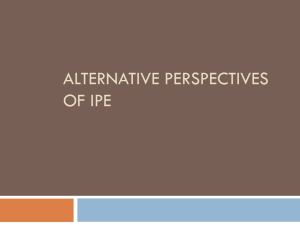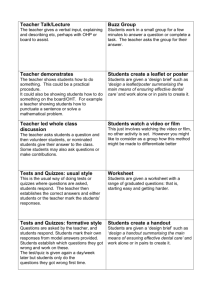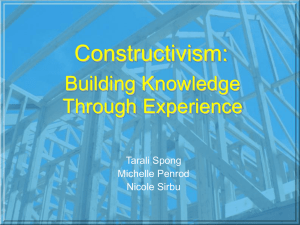File
advertisement
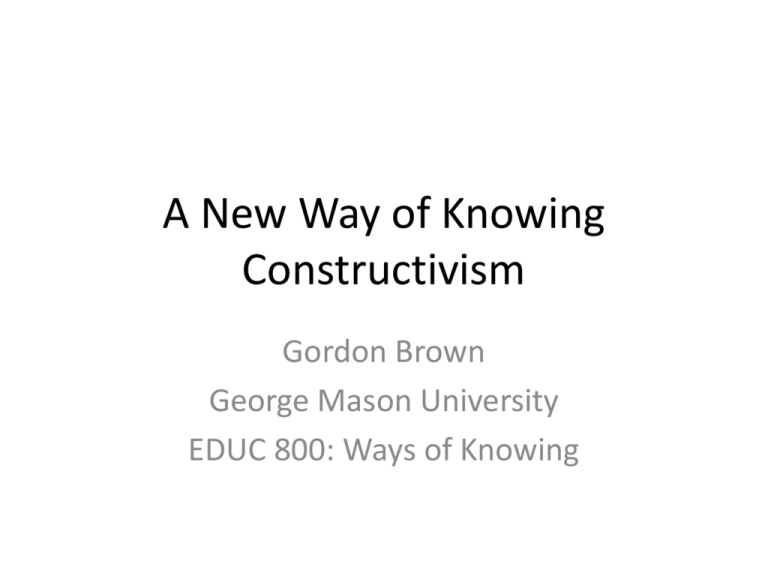
A New Way of Knowing Constructivism Gordon Brown George Mason University EDUC 800: Ways of Knowing Not going to do the powerpoint • Rather than model transmission/direct instruction • I’ll use the 10-15 minutes to model Constructivist methods and we’ll construct our knowledge of constructivism K-W-L • Starting with K-W-L • Jot down 2 things you know about constructivism and 1 thing you want to know • (accessing student prior knowledge, student generated inquiry/curriculum) • And then an example—non-example activity: you may use the paper and peers as needed • (active, cooperative, teacher as facilitator, etc.) 3 Salient Points: #1 • Constructivism the learning theory, credited to Piaget, is not directly related to constructivism the teaching praxis • In fact the theory applies to all methods of pedagogy whether they are based in behaviorism, the cognitive school, direct instruction, objectivism, etc. Salient point # 2: response to critics • Constructivism is not equivalent to maturationism • It is rigorous • In fact, if anything constructivist teachers, when employing the methods properly, work harder and interact with students more than teachers following other pedagogies Salient point #3: Search for a defintion led to construction of one: • Normal dictionaries, namely the current Microsoft Word Encarta Dictionary: English (North America) and Webster’s II from 2005, proved unhelpful. (The e-version of Encarta gave it as a Russian artistic movement of modern art in the 1920s, and Webster’s had no entry). #3 continued • As Davis wrote (1995): • “Constructivism”—like “feminism,” “relativism,” “postmodernism,” and a plethora of other “isms”—has been used as an umbrella term for a range of loosely related notions. As such, it has been subject to a variety of interpretations (see, for example, von Glasersfeld, 1984). Sweeping statements about “constructivist beliefs” are, therefore, inherently problematic. # 3 continued • So, using the collective knowledge assimilated through the research for this paper, let’s attempt to construct a concise definition of constructivism in the context of praxis. • constructivism n. 1. (in praxis) An instructional framework, based on the theory of learning formalized by Piaget of the same name, that includes the following tenets and practices: students are active learners who are engaged in the process of constructing their knowledge; teachers are guides and facilitators who provide stimulating learning environments and pose questions; instruction is inquiry and problem based and often involves collaboration, cooperation and discussion; assessment occurs throughout the learning process, and assessment and evaluation are typically authentic and performance based; students and teachers reflect on any and all aspects of the teaching and learning process and these reflections significantly impact their learning process and products. The paper took a practitioner—not a scholarly—perspective • Not a study of the theory, theorists nor their bodies of works, such as, Piaget, Kant, Dewey • Used sources that practitioners would use, such as, Wikipedia, thirteen.org and short journal articles that provided overviews and pragmatic classroom applications… • …but checked references and closely read and analyzed a number of them, particularly the research and critiques, such as Kim, Kirschner, Sweller & Clark, Brooks & Brooks, etc. Wear a hard-hat • Construction sites result in buildings but can be dangerous and require scaffolding • Remember balance and variety (see conclusion in paper) • Proceed with caution and a deliberate, wellengineered plan




